Various rendering choices? -- Challenge!
-
I've seen a stereoscopic SU/GE model of Machu Picchu (within this forum,) but haven't seen any stereoscopic renderings.
Has anyone pursued stereo rendering? (I'm thinking this model should make a good subject.)
-Taff
-
Just a try for a quick benchmark test of my father's new PC!
A quick studio setup with two rectangle lights.
Took about 40 min (800*x) in vray. Thought it would be faster.Tomorrow I will try a glass material. That will give some nice caustics.
Also tried Jade, but I can't get that damn translucency thing to work in Vray.Greetz, Fritz
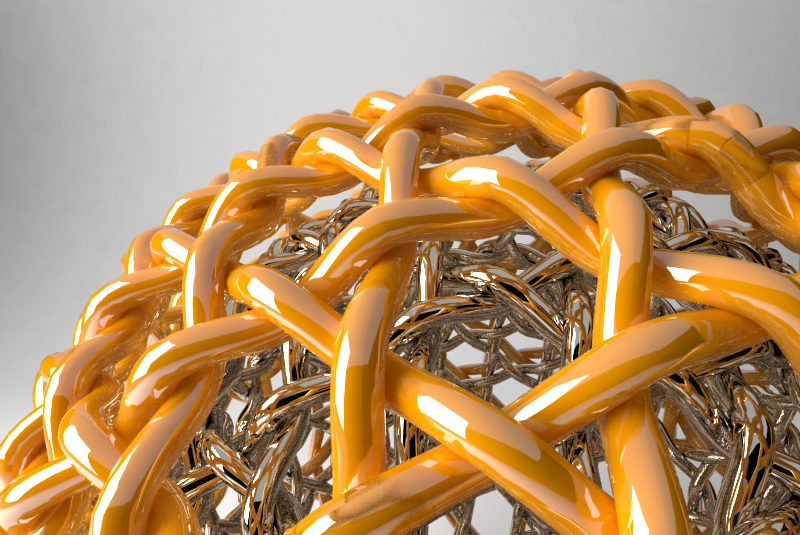
-
Nice reflections.
-
@taffgoch said:
Thanks, Eric.
I'm glad I have some photography experience under my belt, otherwise, I wouldn't even have been able to guess.

My test renders have been with the camera at greater distance, with 135mm "lens" to reduce perspective distortion. (I assume you're using the "standard" 25mm lens.)
My last render, with which I am delighted, took a lot longer to render. I assume this is processing "overhead," due to the out-of-focus regions. I note that the anti-aliasing time went WAY up.
From the Kerkythea console:
Ray Tracing (13839 seconds) -- 3 hr, 50 min, 39 sec
Antialiasing (23945 seconds) -- 6 hr, 39 min, 5 sec
Finished in 10 hours, 29 minutes and 47 seconds
(Render settings: 1200x1200 pixels, preset "16. Path Tracing - High + AA 0.3")
Thanks, again, Eric, for your help & contributions.
-Taff
If you have simple lighting in KT (like one or two lights) then path tracing progressive might be the best option. Biased rendering will loose it's advantage when scene complexity rises and you use higher photon mapping options... For complex lighting MLT or MLT/BPT are better options. If you using HDR sky for lighting (and emitters), MLT might be the best option.
-
@notareal said:
If you have simple lighting in KT (like one or two lights) then path tracing progressive might be the best option. Biased rendering will loose it's advantage when scene complexity rises and you use higher photon mapping options... For complex lighting MLT or MLT/BPT are better options. If you using HDR sky for lighting (and emitters), MLT might be the best option.
Thanks, notareal,
That is great to know, as I haven't previously seen any recommendations about which render mode is best, under various scene conditions. KT has so many options, any tips/tricks are highly beneficial. If you've got any other such tips, or can reference KT webpage/forum URLs for such, I'd love to hear about 'em.
-Taff
-
Tutorials master list is a good starting point and not to forget forum search

-
Thanks, notareal, for the tutorial links. Now, all I need is a few weeks/months to read & apply it all.
My last render pleases me above all my previous renders. The more I stare at it, the more three-dimensional it looks. (Who needs those fancy 3D goggles, anyway!)

What a great program Kerkythea is, and what great help and inspirational ideas you guys provided.
-Taff
-
Looks good Taff. I can't get my eyes to uncross....but oh well. It probably looks better than how my face used to look

-

Initial experiment with KT stereo-image production. View by crossing your eyes, until the two images superimpose in the center. (It will look like 3 images in-a-row.) Concentrate on the center image, until it comes into focus.I used SketchUp to produce two "scenes," which merge into KT as two cameras. (Getting the spacing is tricky. You don't want to overdo the angular separation. It is supposed to mimic the angular separation of your eyes, so camera distance is also a factor.)
-Taff
-
@taffgoch said:
[attachment=0:31w8a5i7]<!-- ia0 -->Stereo_Weave_01.png<!-- ia0 -->[/attachment:31w8a5i7]
. View by crossing your eyes, until the two images superimpose in the center. (It will look like 3 images in-a-row.) Concentrate on the center image, until it comes into focus.-Taff
I find a few beer works well too!

-
that stereo view is amazing!! looks like avatar!!
seriously impressive but my eyes hurt!
-
@olishea said:
that stereo view is amazing!! looks like avatar!!
seriously impressive but my eyes hurt!
Lucky you! I think I have some wiring problems - I never been able to see these kind of "3D" images. No matter how much I try to focus... de-focus or what ever. But different 3D glasses do usually work fine.
-
you have to move your head back and forward to get the "focal length" right lol it really does look 3D!!
-
This is a great learning thread...thanks Taff! My small contribution, if you can call it that...all that I supplied was the computing power. Magnifying lens and scene by Fletch at the Twilight Render Forum.
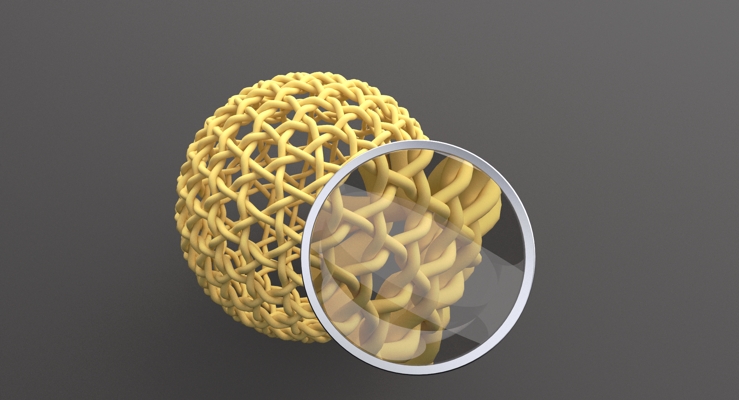
-
@d12dozr said:
This is a great learning thread...thanks Taff!
Marcus,
I've learned a lot, too. Your render depicts a handy concept for presentation of detail in a render.
Regarding my 3D view experiment, I've completed a larger version of my initial, small, proof-of-concept render. If you have a hi-res display, the initial model will look tiny. This one should look much better on hi-res displays.
(If you have trouble focusing, cross-eyed, on the center image, move your head forward or back, as suggested by Oliver Shea.)
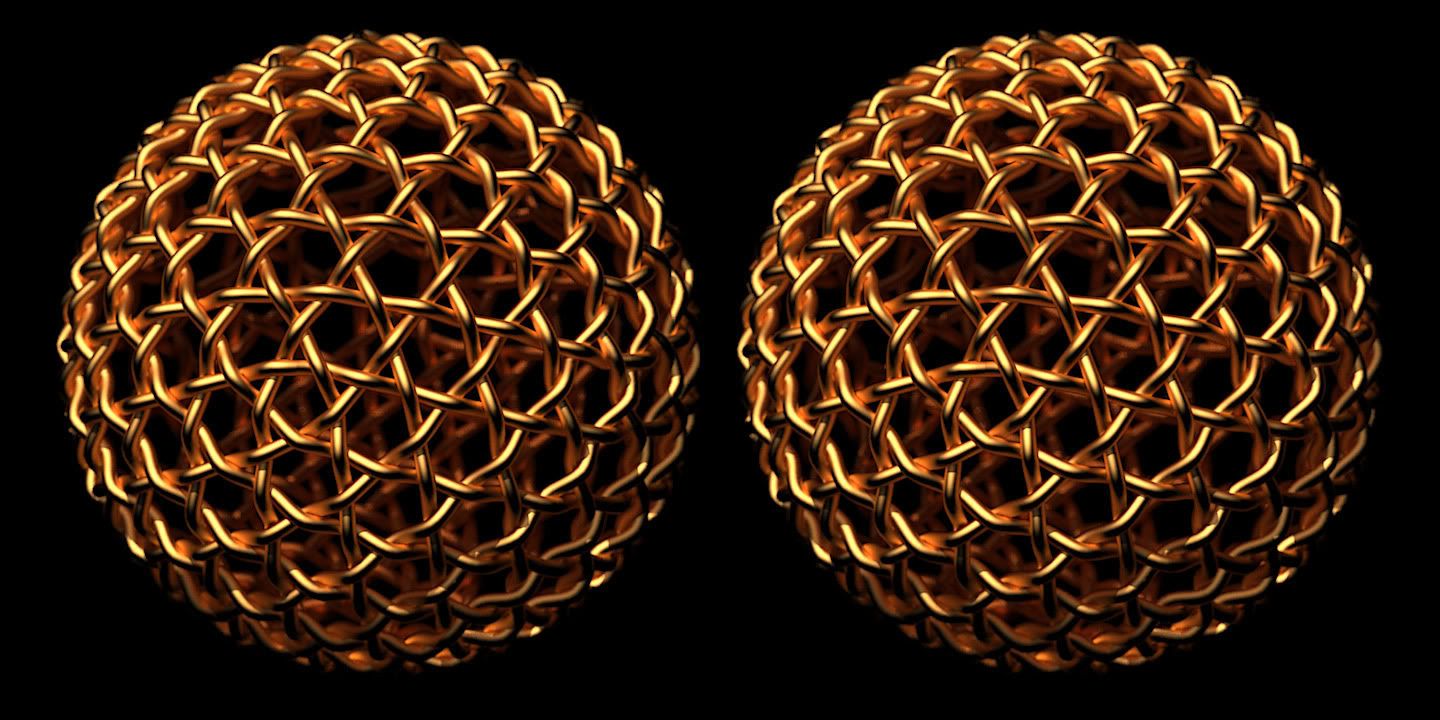
*%(#BF0000)[Render: "16. Path Tracing - High + AA 0.3"
Camera 1:
Ray Tracing : ( 4,892 seconds) 1h/21m/32s
Antialiasing : (12,792 seconds) 3h/33m/12s
Finished in : 4h/54m/48s
Camera 2:
Ray Tracing : ( 4,883 seconds) 1h/21m/23s
Antialiasing : (13,105 seconds) 3h/38m/25s
Finished in : 4h/59m/54s
Both cameras:
Lens: f/4.2, 135mm focal length, 3.4m focus distance]*
-Taff -
I think that render might be a bit large for some of us. The inter ocular distance for most folks is around 2 - 4", and that model on my screen is just under 8" on centers for a 22" LCD. That means your eyes at a normal monitor's viewing distance of 1-3' would have to diverge to get the 3D effect. I tried crossing my eyes, and that didn't work either. Guess mine just don't work that way


-
right... I don't really do cross-eyed picture-things
I do, however, own a very primitive pair of red/cyan-3d-glasses.So I tried making this picture into a picture that can work with those glasses... proves quite difficult, but I think it works...
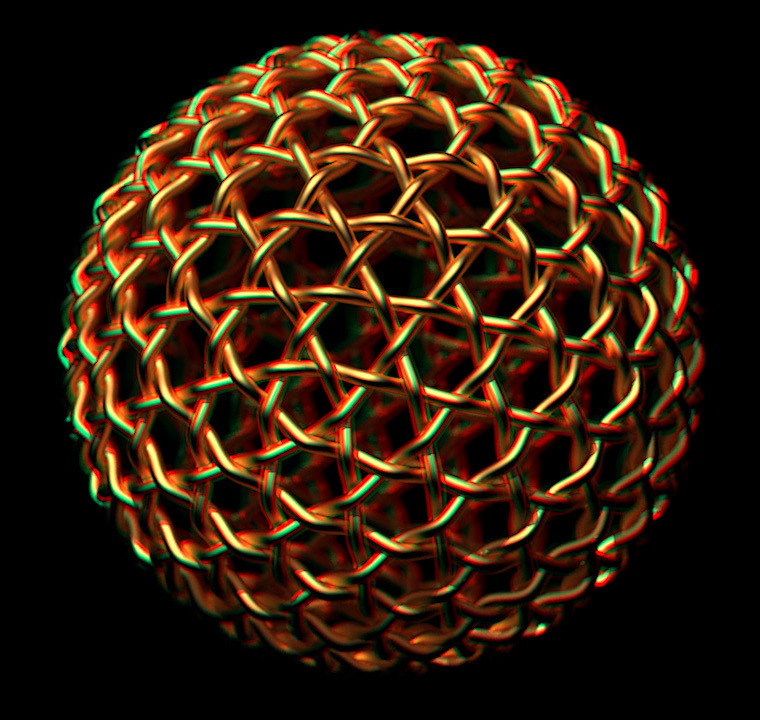
-
yeah i think this one doesn't work as well Taff.....it seems blurry compared to the smaller one....the effect is still there, just not as crisp it seems.
-
@escapeartist said:
"The inter ocular distance for most folks is around 2 - 4", and that model on my screen is just under 8" on centers for a 22" LCD. That means your eyes at a normal monitor's viewing distance of 1-3' would have to diverge to get the 3D effect."
Quiet right, but there are two different versions of this kind of stereo imagery: "parallel" and "cross" viewing.
For parallel-viewing, the images MUST be small enough to be spaced at no more than the interocular distance. Parallel is viewed by "staring" off into the distance, to "set" your lines-of-sight to parallel, then shifting your gaze to the images, without changing the sight-line angle. (Kinda tricky. Many people never get the hang of it. It was easier for me, when I was younger. My eyes are now "old" enough that they can't focus as readily as they used to.)
For cross-viewing, you're looking at the left image with your right eye, and the right image with your left eye. The images, therefore, have no interocular restraint. They can be bigger (sometimes much bigger,) providing the advantage for the viewer "backing away" from the image, to change perceived size (if they can't cross their eyes that much.)
Note that with parallel-view stereo, the left eye is viewing the left image and the right eye is viewing the right image, just the opposite of cross-eyed stereo. For cross-eyed stereo, you MUST swap the images (which I did for my examples.)
Please note that I provided the larger version for high-resolution displays only. On my LCD monitor, the pixels are pretty small, reducing the size of images and text. (The large-stereo image-centers are about 5" apart.) I can view my larger stereo-pair, with my eyes about 2-3 feet from the monitor. If you use Firefox, you can change the size of images/text on internet pages, so you can shrink the stereo image, should need be.
@unknownuser said:
"I do, however, own a very primitive pair of red/cyan-3d-glasses.
So I tried making this picture into a picture that can work with those glasses... proves quite difficult, but I think it works..."I've played with red/cyan (anaglyph) stereo, as well, but never got good, sharp results. I haven't used it since (decades.)
I even tried "wiggle" stereo on this model, but was disappointed with the results. For more info, the Wikipedia article, on "Stereoscopy," is fairly comprehensive.
Eventually, 3D TV technology will migrate to computer displays, and the internet will be filled with 3D images that require dedicated "goggles" to view, just like "Avatar" theater goggles.
-Taff
-
Here's the "wiggle" stereograph, with which I was unimpressed:
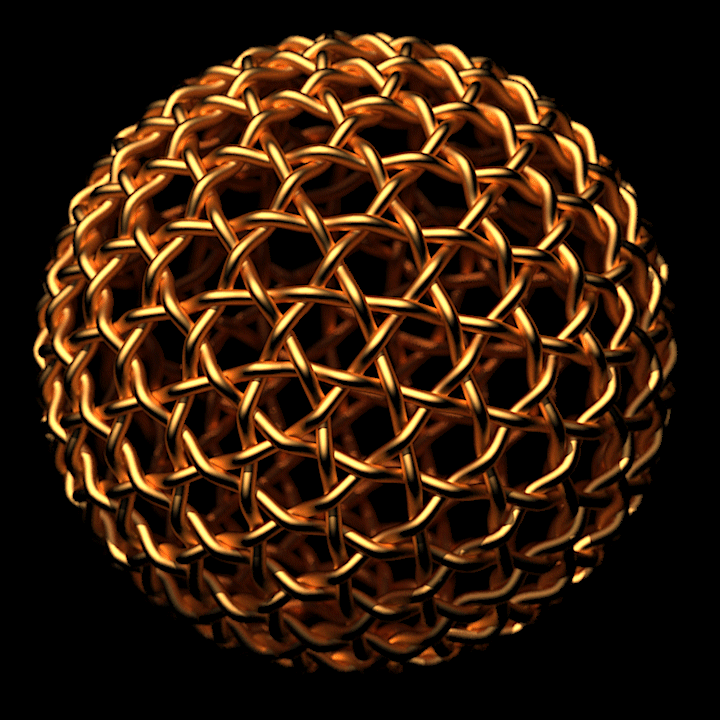
(Give it time to load both "frames.")
-Taff
Advertisement







